When considering camera gear for nature photography many people primarily focus on sensor size and lens focal length/aperture. These are important factors, especially when shooting in lower light conditions. Camera frame rate and buffer size are also important factors to consider if you plan on regularly photographing birds-in-flight and other action subjects. This article features 40 consecutive images of a goose running on the surface of a pond, captured during a recent visit to the Hendrie Valley Sanctuary. I would have missed many of the photographs in this image series if I had been using a camera with a slower frame rate and a smaller buffer.
For folks interested in camera settings here are some details. I shot in RAW plus jpeg fine with a Nikon 1 V3 using Manual mode and the 1 Nikon CX 70-300 mm f/4.5-5.6 fully extended to 300 mm. This provides an equivalent field-of-view of 810 mm when compared to a full frame camera. I had my camera set for continuous auto focus (AF-C) with subject tracking, with a frame rate of 10 fps. I used Auto ISO 160-6400 with matrix metering. My shutter speed was set at 1/1600 and aperture at f/5.6. ISO varied between individual frames from ISO-450 to ISO-800. Vibration reduction was turned off.
In the first 7 frames of the AF-C run the goose appears to be making a typical water landing as you’ll be able to see in the series of images below.
NOTE: Click on images to enlarge.
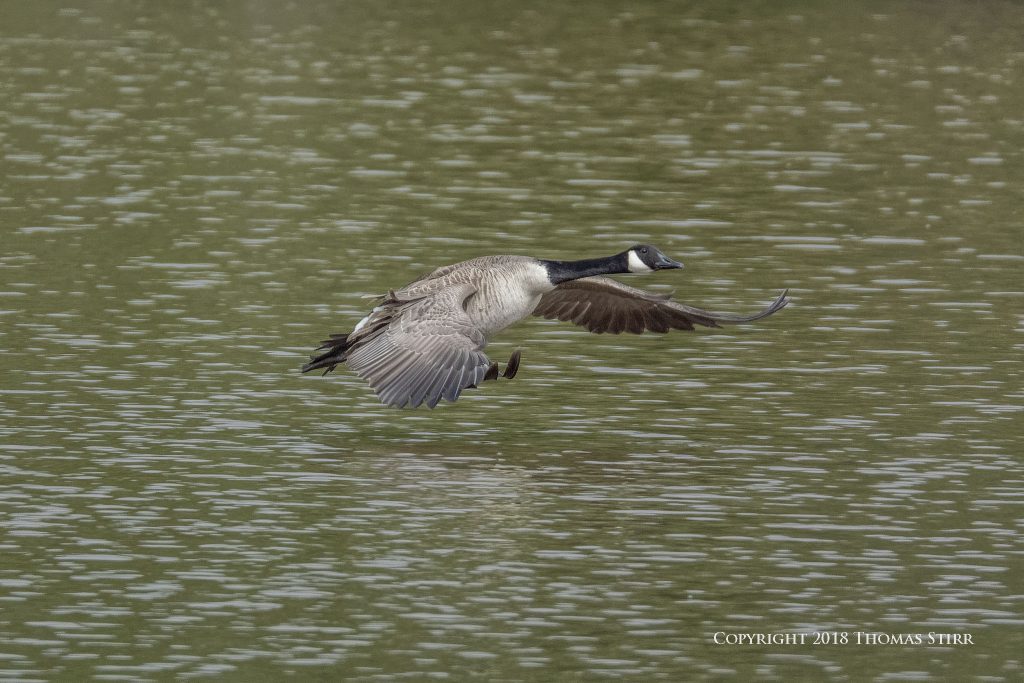


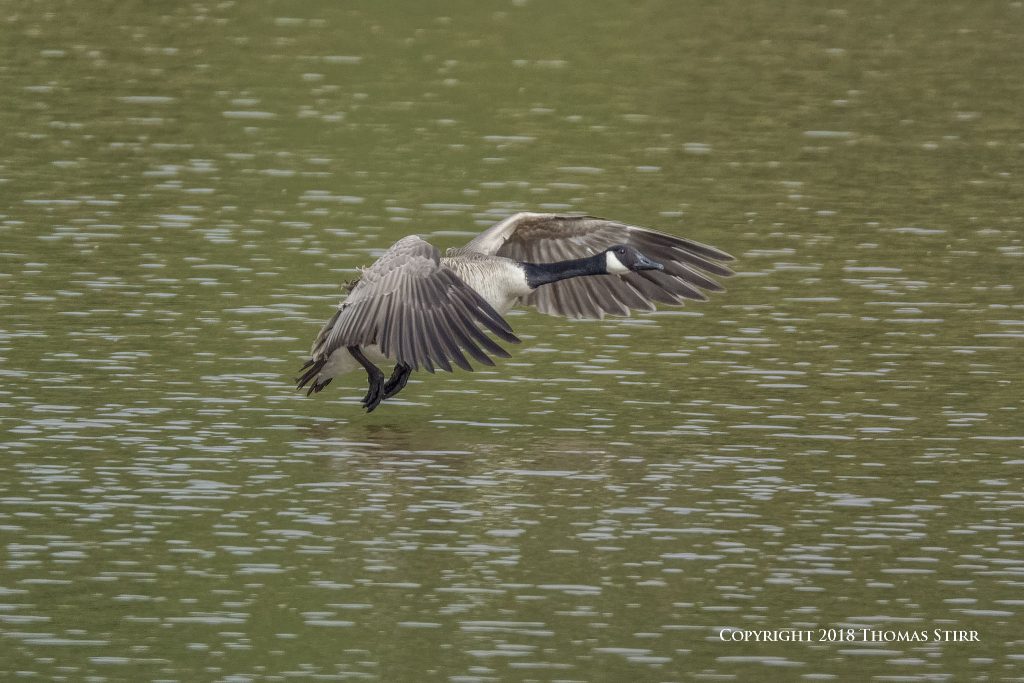


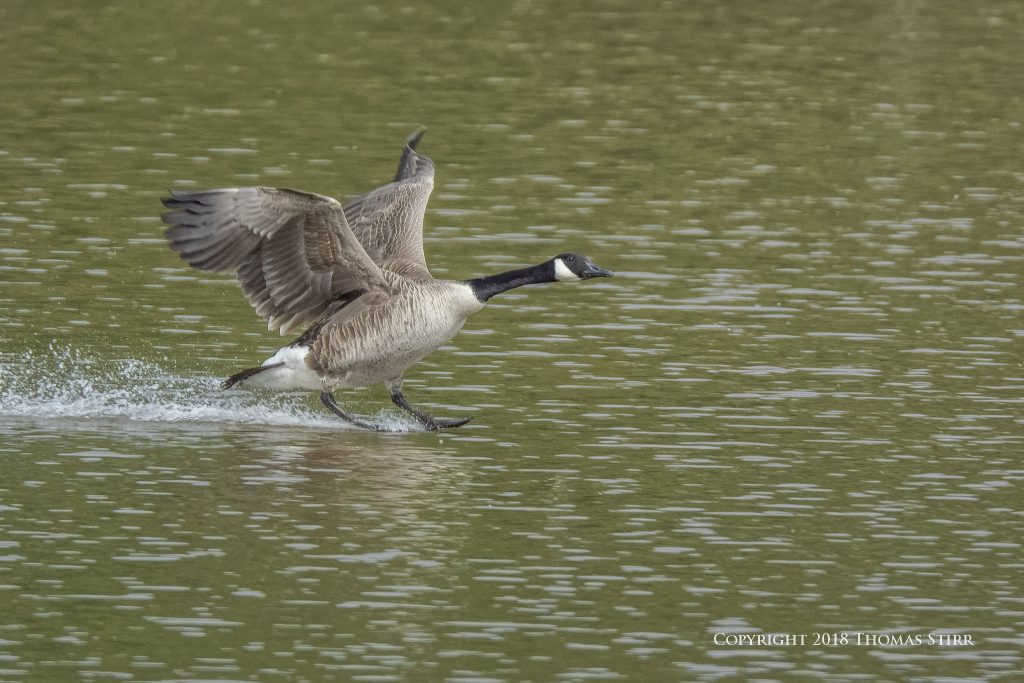
As the goose touched down (as seen in frames 6 and 7 above) I was expecting the goose to drop its tail to slow down further, allowing it to lower itself into the water and create a wake with its lower abdomen.
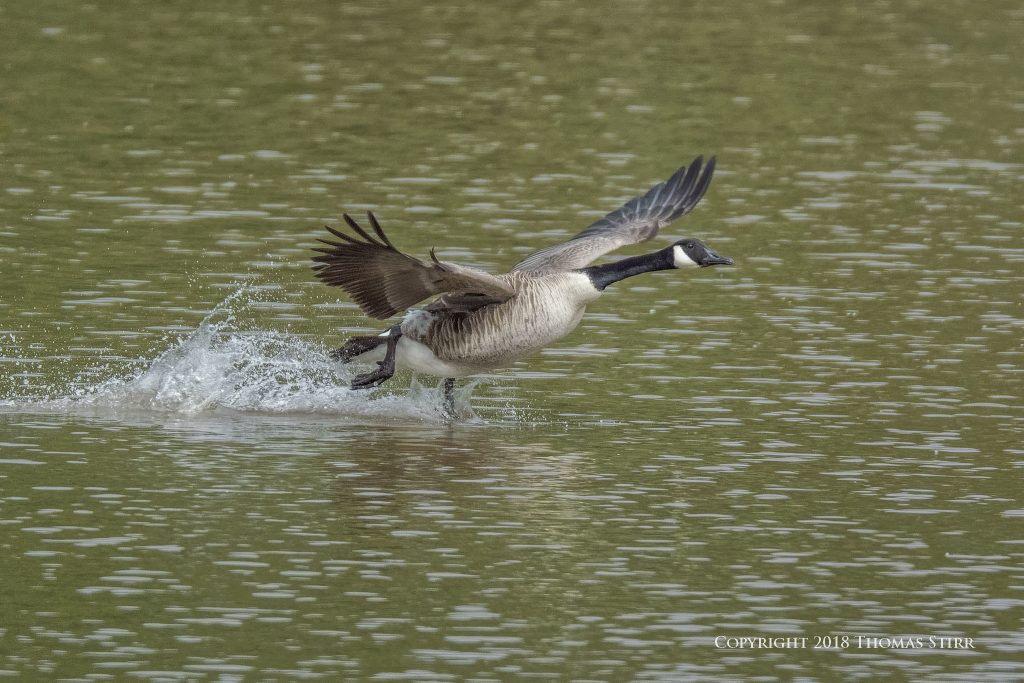
Instead the goose pumped its wings hard to raise itself back up and began to run across the surface as seen in frame 8.
In frames 9 through 14 the goose continues to run over the surface of the water while pumping its wings to avoid dropping down. You’ll notice the goose’s beak just begins to open in frame 14.




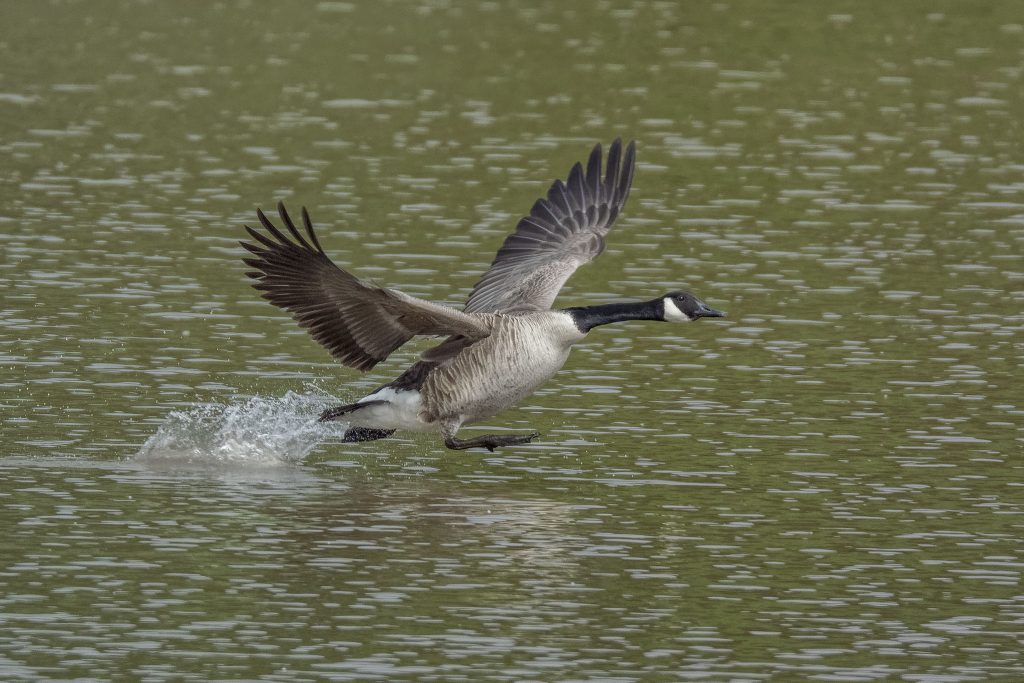

As shown in frames 15 through 40 (when my V3’s buffer filled) the goose went into a threat display, honking loudly as it continued to run across the surface of the water. In some of the frames you’ll see its tongue extended and clearly visible.
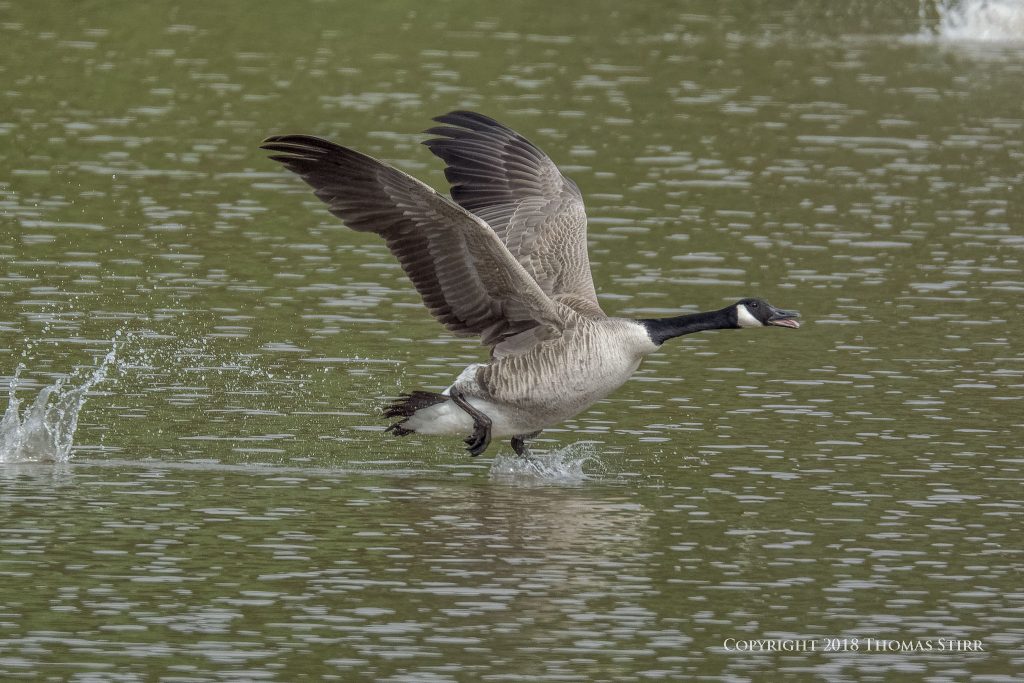


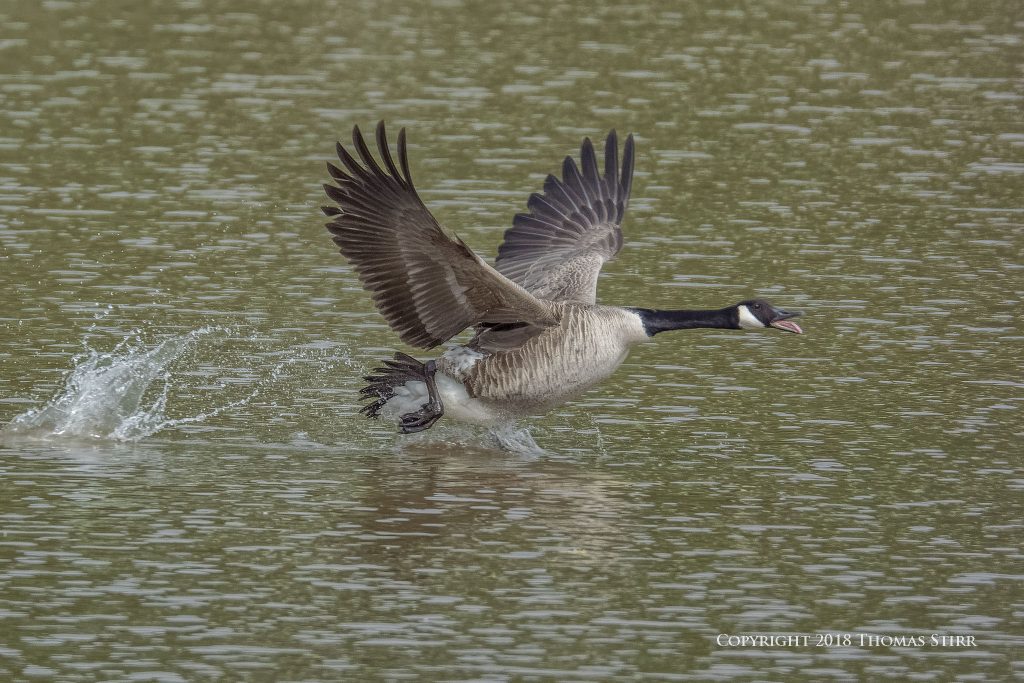






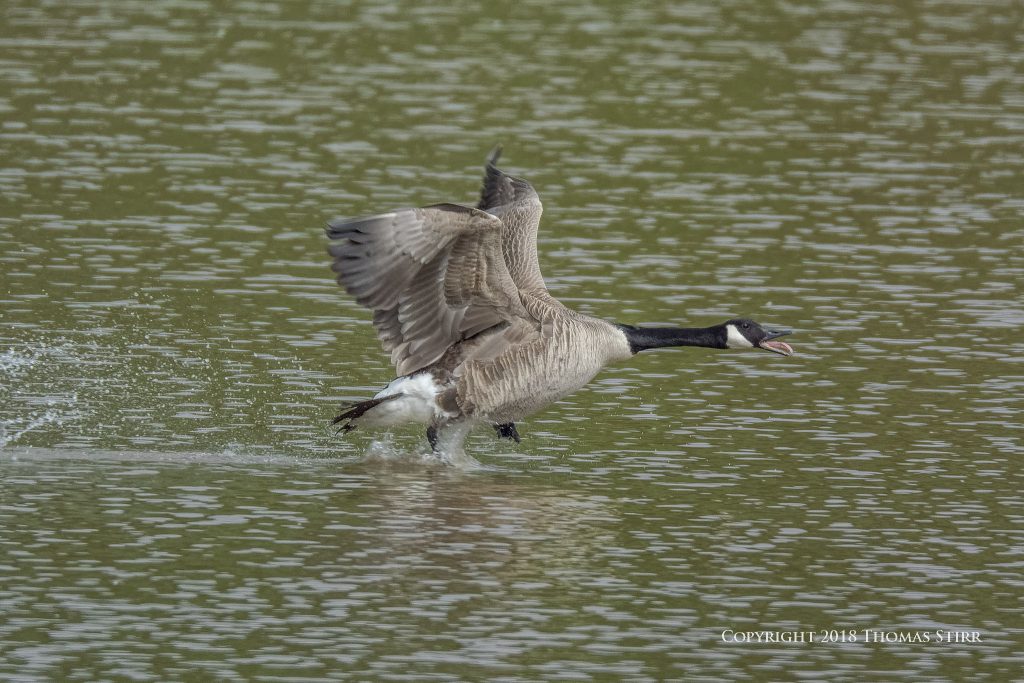












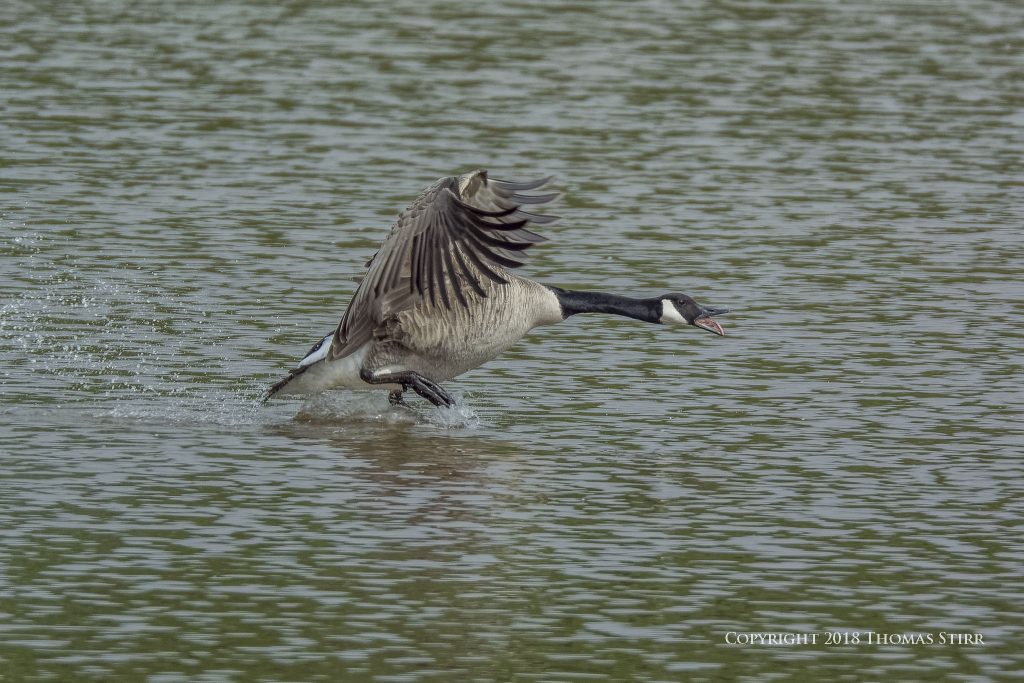


The 40 images you have just viewed took a total of 4 seconds to capture. If I would have shot my Nikon 1 V3 at 20 frames per second in AF-C my buffer would have filled in 2 seconds but I would have captured a larger variety of body positions during the AF-C run.
The choice of camera gear is a very personal decision based on the individual needs of a photographer. Personally I don’t think it matters what brand or format someone uses, or if they choose a DSLR, an interchangeable lens mirrorless camera, or a bridge camera. The key is to use whatever gear best meets your needs and fits within your available budget. Making an informed choice will help ensure that you are happy with your camera gear for many years to come.
If you plan on photographing birds-in-flight and other action subjects be sure to check out the frame rate and buffer size of any camera you are considering.
Technical Note:
All photographs were captured hand-held using a Nikon 1 V3 and a 1 Nikon CX 70-300 mm zoom lens as per the EXIF data noted in the article. All images were produced from RAW files using my standard process of DxO PhotoLab, CS6 and the Nik Collection.
Word of mouth is the best form of advertising. If you like our website please don’t be shy about telling your friends and associates about it. Linking to this site or to specific articles is allowed with proper acknowledgement. Reproducing articles or any of the images contained in them on another website is a Copyright infringement.
My intent is to keep this photography blog advertising free. If you enjoyed this article and/or my website and would like to support my work you can purchase an eBook, or make a modest $10 donation through PayPal, both are most appreciated. You can use the Donate button below. Larger donations can be made to tom@tomstirr.com through PayPal.
Article and all images are Copyright 2018 Thomas Stirr. All rights reserved. No use, duplication or adaptation of any kind is allowed without written consent. If you see this article reproduced anywhere else it is an unauthorized and illegal use. Posting comments on offending web sites and calling out individuals who steal intellectual property is always appreciated!


Stunning running on water shots!
Thanks Joni,
I’m glad you enjoyed the images!
Tom
Hi Tom,
Wonderful sequence/series of action!
Particularly love frames 20-40 where the goose
seems to be walking on water. Sometimes, I can’t believe
you’re using a Nikon CX format camera 😀
Oggie
I’m glad you enjoyed the series of images Oggie – and thank you for the supportive comment! Next month it will be three years since I sold my Nikon D800 and all of my full frame glass…and I haven’t regretted that decision at all.
Tom
Great job keeping the bird in the center of the FOV!
Hi Colin,
I wouldn’t want to mislead you…I didn’t do quite as good a job as you may think! The images in this article were cropped slightly to 4000 pixels on the wide end and the subject bird in each frame was re-positioned slightly if needed, before the final image was downsized to 2048 pixels in width. Whenever I use full frame captures that have not been cropped at all in an article I always point that out to my readers by stating that in an article.
Tom
Silly questions, perhaps. Why were you shooting in both NEF and JPG fine, instead of just NEF? If you had shot in just NEF, would your buffer have been bigger? I am under the impression that a V3 only has one card slot, so I do not understand the reason for shooting in both formats.
WEJ
Hi William,
Sometimes I work on my files with different computers in terms of doing the initial sorting and creating sub files. Depending on the computer I use it is sometimes easier to use jpegs for this initial part of my process. Not sure if my buffer would have been any larger. That is something I will play with the next time I’m out.
Tom
FWIW: Just shoot in NEF, have a quick “down and dirty” preset in PhotoLab, and export JPGs from it to sort/pick from. Just a suggestion.
WEJ
Thanks for the suggestion William!
Tom